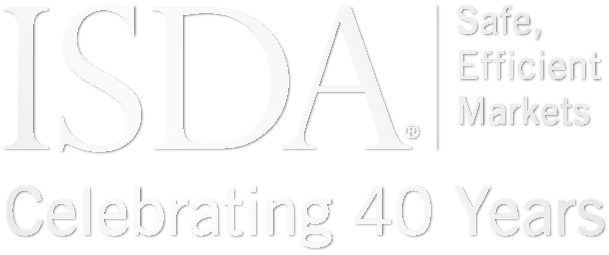In 2017, ISDA embarked on a project to develop the ISDA Common Domain Model (ISDA CDM™), a common, robust, digital blueprint for how derivatives are traded and managed across their lifecycle. This would provide a standard upon which existing and emerging technologies such as distributed ledger, cloud and smart contracts can be built. These common standards aim to enable and/or accelerate greater automation and efficiency in the derivatives market while facilitating interoperability across firms and platforms.
In this ISDA CDM™ 1.0 version, ISDA has set out, in a machine-readable format, a standard digital representation of events and actions that occur during the life of a derivatives trade. It is based on the design principles specified as part of the ISDA’s October 2017 CDM concept paper for a product scope limited to simple interest and credit derivatives products and an agreed sample of business events. By publishing this initial baseline, ISDA is looking for feedback and validation from market participants in order to refine the model. ISDA also anticipates working on proofs of concept that demonstrate various applications of the CDM.
The release package includes the following components:
- The latest representation of the model that expresses the data and associated rule logic in machine-readable documents:
- Human readable textual format using formal syntax;
- Data file machine-readable format (JSON – JavaScript Object Notation);
- Automatically generated application program interface (API); and
- Programmatic code of Java classes for the set of data component defined by the model packaged within Java archive in .jar format along with the corresponding source code and upstream dependencies of the generated Java classes in .jar format.
- The digital representation of the ISDA definitions for interest calculations using the model to demonstrate its ability for transcribing legal documentation into machine-readable format using the CDM syntax;
- Projections of trade representation of interest rate derivatives, credit derivatives and related options in JSON format leveraging org sources;
- Projections of events per the model scope in JSON format leveraging manufactured event data produced by the CDM Design working group;
- Documentation in .html format to detail the key principles of the model, the syntax adopted in this initial phase, the inference logic to support the construction of derivatives products using the composite approach of the model;
- A short README section providing initial explanations on the structure of the packaged snapshot.
While the release package provides an overview of what has been achieved so far, members should note that it remains a snapshot of the ISDA CDM™. Work to develop the model is continuing and this artefact will be updated accordingly. For the most recent view of the model and answers to questions, members should reach out to the MarketInfrastructureandTechnology@isda.org or the ISDA press office and join the ISDA CDM design working group.
Latest
Updated OTC Derivatives Compliance Calendar
ISDA has updated its global calendar of compliance deadlines and regulatory dates for the over-the-counter (OTC) derivatives space.
A Positive Step to Improve the FRTB in the EU
As the Basel III capital reforms are finalized for implementation in key jurisdictions, ISDA is maintaining a laser focus on making sure the rules are robust and risk-appropriate. Simply put, if capital requirements are set disproportionately high, this will have...
Trading Book Capital: Scott O'Malia Remarks
Trading Book Capital: Policy Challenges for the EU 2024-2029 Mandate March 25, 2025 Welcoming Remarks Scott O’Malia ISDA Chief Executive Officer Good morning and welcome to ISDA’s trading book capital event. It’s great to be here in Brussels and...
Setting Out the Value Proposition of Derivatives
History enthusiasts may have heard of the Code of Hammurabi, an early legal text from ancient Mesopotamia, carved into a stone slab about 3,700 years ago. The code covers everything from property rights to divorce, but it also recognizes the...


